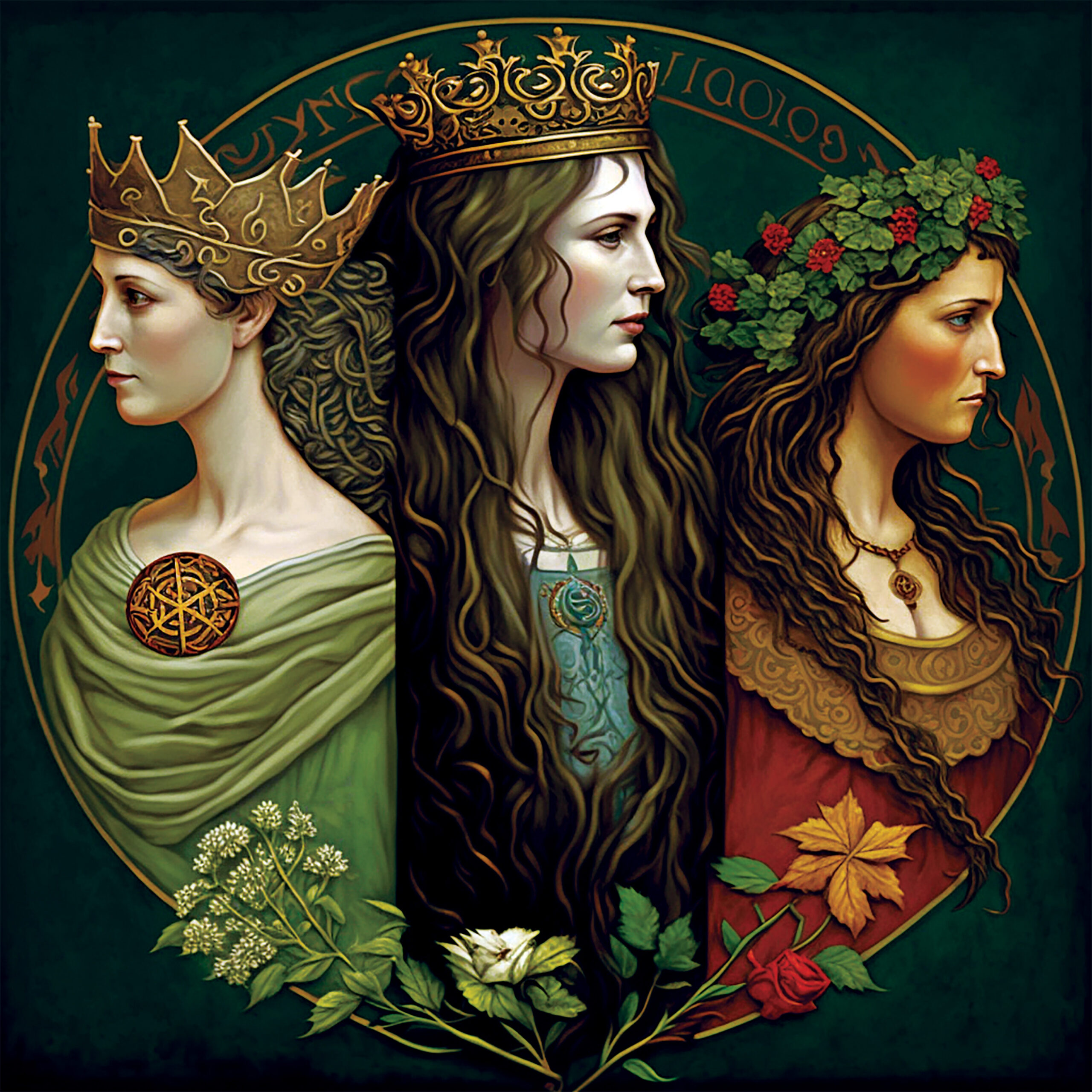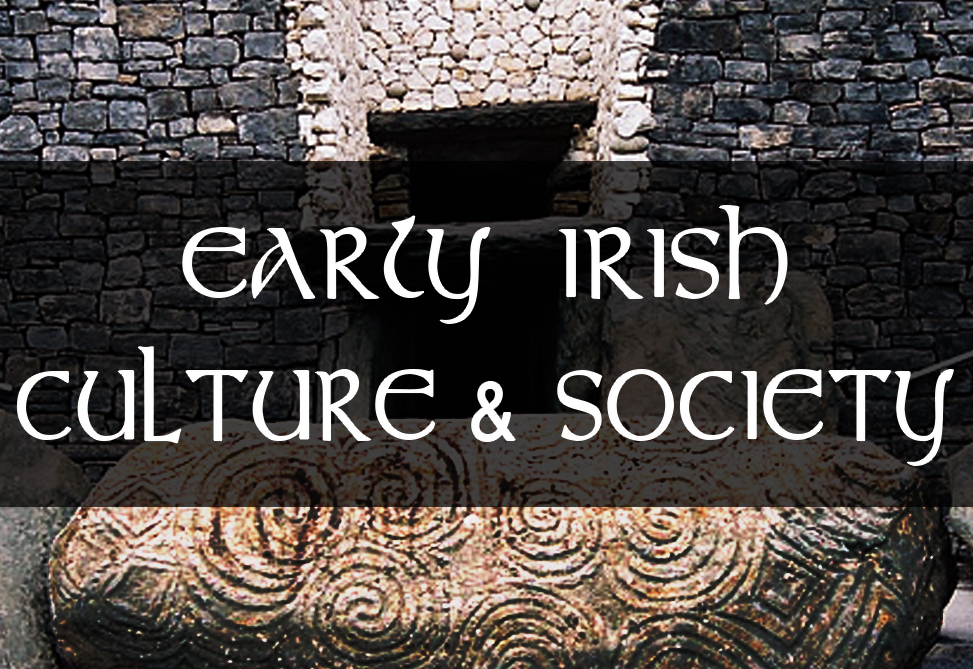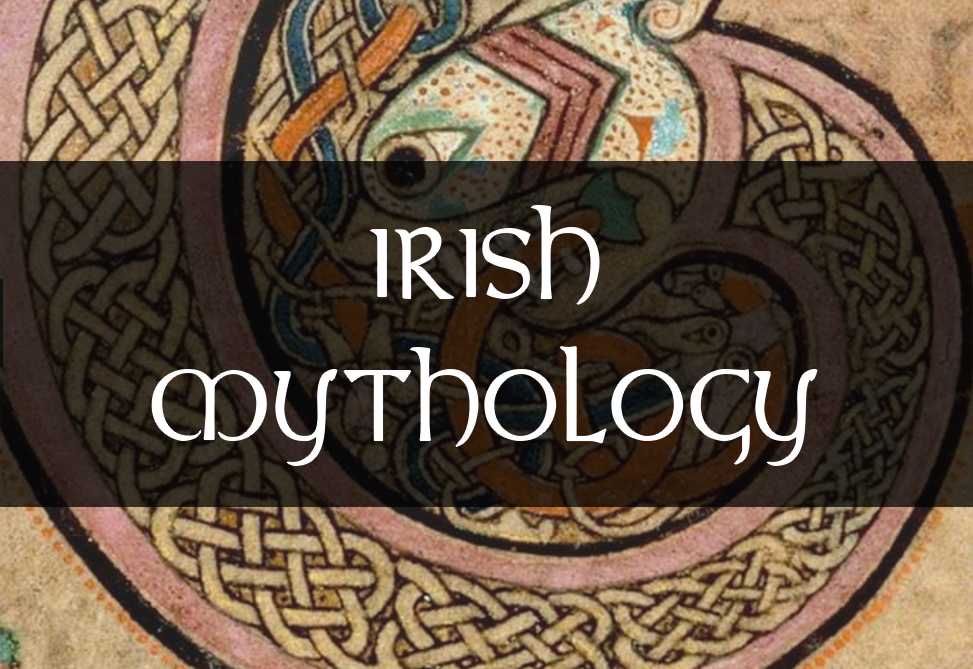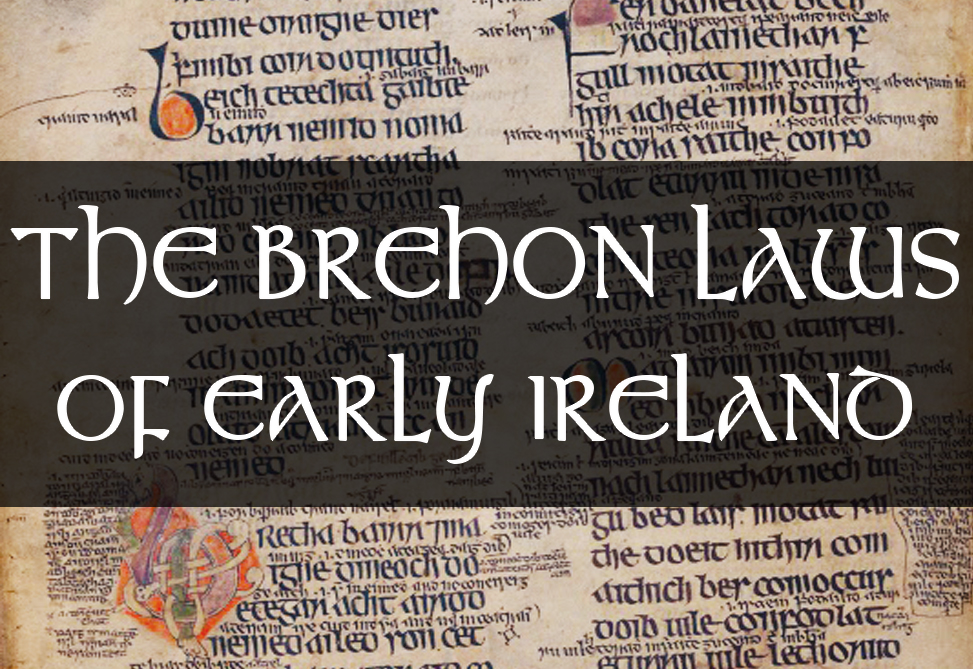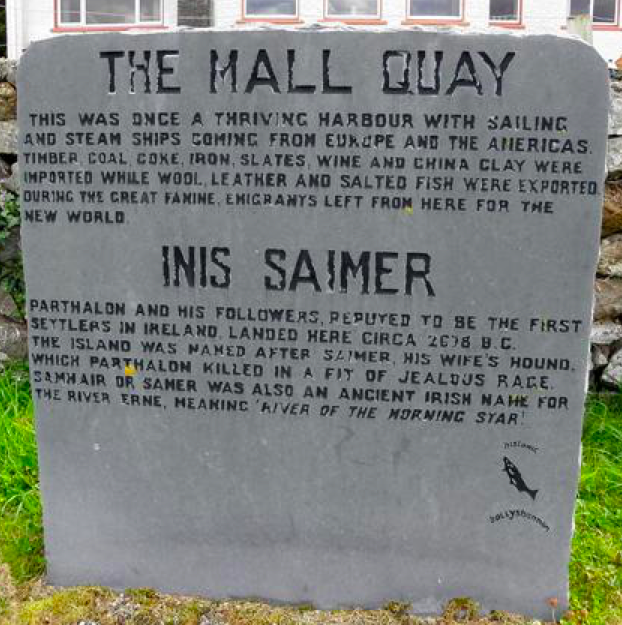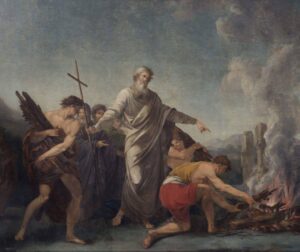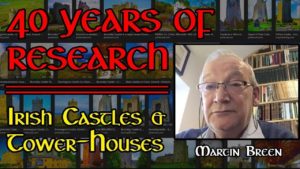The story of the Milesians’ arrival in Ireland, their encounter at Uisneach with the three goddesses Ériu, Banba, and Fódla, and the events leading to the Battle of Tailtiu (often associated with Teltown) is a cornerstone of Irish mythology, primarily drawn from the Lebor Gabála Érenn (The Book of the Taking of Ireland).
This medieval text, compiled by Christian monks (inheritors of the Druids), weaves oral traditions and poetic narratives into a pseudo-historical account of Ireland’s invasions.
Below, I recount the tale with a focus on accuracy, incorporating dialogues and incantations attributed to Amergin Glúngheal, the Milesian poet-seer, and grounding the narrative in trusted sources.
I’ll also clarify the roles of the goddesses’ husbands, the last three kings of the Tuatha Dé Danann, and address the mobilisation for the Battle of Tailtiu.
Where exact dialogues are not preserved, I’ll rely on the narrative structure and known verses, avoiding embellishment beyond what the sources support.
Do you like the cover image for this article?
We sell posters and prints directly from our online store.
Click the image to start shopping now.
The Milesians’ Arrival and the Nine Waves
The Milesians, descendants of Míl Espáine (representing the Goidelic Celts), sailed from Iberia to avenge the death of their kinsman Íth, slain by the Tuatha Dé Danann after praising Ireland’s fertile lands.
Led by the sons of Míl—Donn, Éremon, Éber Finn, Ir, and Amergin, among others—their fleet of 65 ships approached Ireland on Bealtaine, around the 1st of May, sometime between 700–400 BCE according to mythological chronology.
They landed at Inber Scéne (likely Kenmare Bay), and Amergin Glúngheal, the poet-seer and judge, was the first to set foot on Irish soil.
As his right foot touched the land, he chanted his First Song of Invocation, a mystical poem asserting his unity with the natural world, preserved in the Lebor Gabála Érenn and later sources:
I am the wind on the sea;
I am the wave of the sea;
I am the bull of seven battles;
I am the eagle on the rock;
I am a flash from the sun;
I am the most beautiful of plants;
I am a strong wild boar;
I am a salmon in the water;
I am a lake in the plain;
I am the word of knowledge;
I am the head of the spear in battle;
I am the god that puts fire in the head;
Who spreads light in the gathering on the hills?
This incantation, considered one of the oldest compositions in Irish, reflects Amergin’s role as a druidic figure, claiming dominion over the land by identifying with its elements.
Inspired by the land’s abundance, he recited a Second Song of Invocation (though its full text is less consistently preserved), celebrating the “Irruption of Fish” and the fertility of Ireland.
The Tuatha Dé Danann, the supernatural race ruling Ireland, sought to repel the invaders.
Their druids and poets conjured a magical storm to drive the Milesian fleet away, forcing the ships to anchor “nine waves” from the shore—a symbolic distance in Celtic tradition, representing a boundary between worlds.
The Tuatha Dé’s kings—Mac Cuill, Mac Cecht, and Mac Gréine—agreed to a three-day truce, demanding the Milesians remain at this distance.
However, the Tuatha Dé intensified the storm, hoping to sink the fleet or cast it adrift.
Recognising the storm as druidic, for it raged only above the masts, the Milesian Éber Finn called upon Amergin to counter the magic.
Amergin ascended the ship’s prow and chanted his Third Song of Invocation, a powerful verse to calm the sea and invoke Ireland’s natural features:
I invoke thee, Erin,
Brilliant, brilliant sea,
Fertile, fertile hill,
Wood with valleys,
Flowing, flowing stream…
This archaic, animistic rune, embedded in the Lebor Gabála Érenn, subdued the storm, allowing the Milesians to land safely at the Boyne estuary.
However, the tempest flared again when Éber boasted of striking the Tuatha Dé with “spear and sword,” drowning many Milesians, including Donn, who perished at a place later called Tech Duinn.
The survivors regrouped, determined to press inland.
The Encounter at Uisneach
As the Milesians marched toward Tara, the royal seat of Ireland, they encountered three goddesses of the Tuatha Dé Danann—Banba, Fódla, and Ériu—each on a sacred mountain.
These goddesses, often interpreted as sovereignty deities, were the wives of the Tuatha Dé’s last three kings: Mac Cuill (husband of Banba), Mac Cecht (husband of Fódla), and Mac Gréine (husband of Ériu).
Known as Éthur, Téthur, and Céthur, sons of Cermait and grandsons of the Dagda, they had ruled jointly after slaying Lugh for their father’s death.
Their names—Mac Cuill (“Son of Hazel”), Mac Cecht (“Son of the Plough”), and Mac Gréine (“Son of the Sun”)—suggest associations with wisdom, agriculture, and solar divinity, respectively.
The meetings occurred at three locations, culminating at Uisneach, the sacred centre of Ireland, often called the “navel” or Axis Mundi.
The Lebor Gabála Érenn and related texts describe these encounters as diplomatic yet charged with symbolic weight.
Each goddess requested that Ireland bear her name, reflecting her claim to the land’s sovereignty.
Banba appeared first, possibly at Sliab Mis (Slieve Mish). She greeted the Milesians and spoke with Amergin, saying:
“If you have come to conquer this land, it is not unjust that you should name it after me, for I am Banba.”
Amergin, respectful of her divine presence, promised her name would endure as a poetic title for Ireland.
Fódla met them next, perhaps at her namesake mountain. She made a similar request:
“Name this island after me, Fódla, and you shall have good fortune.”
Amergin agreed, ensuring her name, too, would be a poetic synonym for Ireland.
Ériu, the most prominent, greeted the Milesians at Uisneach, where her grave, the Catstone (Ail na Mireann), marks Ireland’s spiritual heart. She spoke with authority:
“Warriors, welcome. Long have I foreseen your coming. Yours is the land, but I ask that you name it after me, Ériu, and it shall be a name of renown.”
Amergin, struck by her sovereign presence, declared:
“Ériu shall be the chief name of this island forever.”
Ériu’s name became Éire, the modern name for Ireland in the native tongue, Gaeilge, while Banba and Fódla remain poetic aliases.
The goddesses’ requests, granted by Amergin as judge and seer, symbolised the Milesians’ legitimate claim to the land through divine sanction.
At a time when the “sovereignty of the land” was symbolised by the banfhlaith or ‘noble woman’, this carried staying significance in the psyche of the people for generations.
The Kings of the Tuatha Dé Danann
The husbands of the goddesses—Mac Cuill, Mac Cecht, and Mac Gréine—were the final kings of the Tuatha Dé Danann, ruling as a triumvirate.
Their divine attributes and lineage tied them to the Dagda, a chief god of fertility and wisdom.
Mac Cuill, associated with hazel (a symbol of knowledge), may have presided over druidic wisdom.
Mac Cecht, linked to the plough, embodied agricultural prosperity.
Mac Gréine, tied to the sun, likely represented cosmic order and light, possibly echoing solar deities like Lugh.
Their joint rule followed the death of Lugh, whom they killed to avenge their father, Cermait, though their reign faced the Milesian threat.
The kings initially sought peace, proposing the three-day truce and the nine-wave distance, but their use of the magical storm revealed their intent to resist.
When the Milesians landed, the kings prepared to defend Ireland, mobilising their forces alongside their divine kin, including figures like the Dagda, Morrígan, and Manannán mac Lir.
Mobilisation for the Battle of Tailtiu
After the Uisneach encounter, the Milesians pressed toward Tara but were drawn into conflict at Tailtiu (modern Teltown, Co. Meath), which is more associated with later Christian narratives like St. Patrick’s Paschal fire.
Tailtiu was a sacred site linked to the goddess Tailte, foster-mother of Lugh, and the Lughnasadh festival, making it a fitting stage for this mythic clash.
The Lebor Gabála Érenn describes the mobilisation as both sides prepared for a decisive battle. The Milesians, led by Éremon, Éber Finn, and Amergin, rallied their warriors, who had already fought at Sliab Mis, where they lost Scota, wife of Míl, and Fas, wife of Un.
The Tuatha Dé Danann, under Mac Cuill, Mac Cecht, and Mac Gréine, mustered their supernatural host, bolstered by druidic magic and warriors like Ogma, Goibniu, and Dian Cecht.
The text notes the battle was “vehement and whole-hearted,” lasting from morning to evening, with both sides “contending, bone-hewing, and mutilating one another.”
The stage was set for a cataclysmic confrontation at Tailtiu, where the fate of Ireland would be decided.
The Milesians, driven by vengeance and Amergin’s poetic authority, faced the Tuatha Dé Danann, whose divine powers and desperation to retain their realm promised a fierce struggle.
The battle would see the fall of the three kings and queens, with Mac Cuill slain by Éber, Mac Cecht by Éremon, and Mac Gréine by Amergin, marking the end of the Tuatha Dé’s overt rule.
Notes on Sources and Accuracy
This account draws primarily from the Lebor Gabála Érenn, and, supplemented by secondary sources for Amergin’s songs and the goddesses’ dialogues.
The Song of Amergin is a direct quotation from preserved texts, though its translation varies slightly across sources.
The dialogues of Banba, Fódla, and Ériu are paraphrased from the Book of Invasions and related traditions, as exact wording is not always preserved, but their intent is consistent.
The Battle of Tailtiu is confirmed by multiple sources and is the site of the Tuatha Dé’s defeat.
